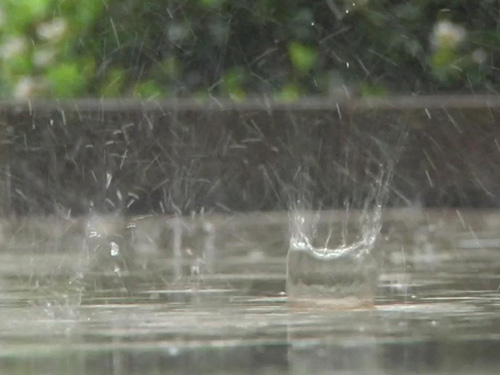PERIMETER BLOG
LATEST NEWS & INTERESTING FACTSWinter is coming.
Fortunately for homeowners in North Vancouver and the entire lower mainland, instead of white walkers and exploitative violence, we’re only going to be attacked by storms and sudden surges of runoff flowing down the mountains.
Wait, which is worse?
Anyways, there are plenty of precautions you can take to divert storm runoff so it doesn’t end up in your basement or contributing to clogged municipal drainage systems.
Berms. A raised shelf of dirt that separates two areas with natural earth and minerals, landscaping a berm into your yard adds a natural barrier between water flow and your basement or other structures. You can install berms yourself or hire a landscaping company to place them strategically in the path of stormwater flow to slow it down or redirect it so it doesn’t come back toward your house. Plus, with grass and a few trees, they add a nice visual touch as well.
Swales. Either natural or man-made, a swale is the reverse of a berm; a low tract of land designed to manage runoff or filter out yard pollutants. Swales spread out water flow horizontally across the elevation line so there’s less water for storm drains to deal with. They’re used effectively as a water-harvesting ditch as well; as the flow is spread out, areas of earth that normally wouldn’t have access to water are cared for naturally.
Dissipation Boxes. Typically made of plastic these days, dissipation boxes filter out vegetation or sediment that flows with runoff from nearby roofs before releasing it into the storm system. Inserted straight into the ground, dissipation nets require virtually zero maintenance and they work immediately. Here’s an example off a dissipation box at work.
Natural Creeks. Properties with natural slopes sometimes require a focus for stormwater runoff. We’ve installed plenty of small ditches right into the river rock so water can flow naturally into nearby creeks or drainage ditches. Natural and man-made creeks also allows water to re-absorb into the ground, but in a controlled manner. Natural creeks also assist with aquifer management, because they control the speed with which water returns to the aquifer (an underground layer or permeable rock or sediment that yields water) so it’s not overwhelmed.
Small Ponds. Small residential ponds posses their own private ecosystem. Fresh water flows through them and is absorbed by the life contained therein such as plants and wildlife. Any water soaked up is used, while the overflow continues on into the system’s storm drain.
Tree & Water-Thirsty Plants. The lower mainland is a green place because of the moisture available to native plants as a result of the never-ending precipitation. Installed properly and in the right places, plants can have a dramatic impact on the amount of water that actually makes it into the storm drain. Plus, like berms and swales, trees offer an aesthetic touch as well. There are plenty of plants that can handle prolonged submersion as well as plants that thrive in off-and-on soggy conditions.
No one likes spending money on continual lawn and yard maintenance, but a gigantic bill caused by a damaged water main or cracked foundation will cost a lot more. In addition to regular checks and preventative maintenance, natural elements give you an opportunity to get creative and outfit your yard with the best features money doesn’t have to buy.

